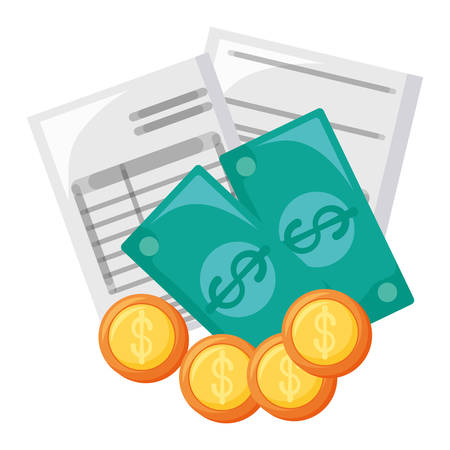1. Understanding Cash vs. Card Spending
When it comes to everyday purchases, Americans often find themselves choosing between cash and cards—either debit or credit. Each method has its own set of advantages, drawbacks, and cultural habits that can impact your budget.
Cash: The Tangible Approach
Using cash means handing over physical bills and coins for your purchases. Many people feel that spending cash makes them more aware of how much they’re actually using because you literally see your money leave your wallet. For small expenses like coffee, snacks, or tipping, cash is still widely used in the U.S., even though it’s becoming less common overall.
Pros and Cons of Using Cash
| Pros | Cons |
|---|---|
| Easier to limit spending | No purchase tracking automatically |
| No interest fees | Risk of loss or theft |
| Widely accepted for small transactions | Not always convenient for large purchases |
Card Spending: Convenience and Flexibility
Cards—both debit and credit—have become the go-to option for many Americans. Debit cards let you spend only what’s in your bank account, while credit cards allow you to borrow up to a certain limit and pay later. Credit cards are popular for their rewards programs and fraud protection, but they can also tempt overspending.
Pros and Cons of Using Cards
| Pros | Cons |
|---|---|
| Convenient for all purchase sizes | Potential for overspending (especially with credit) |
| Rewards and cashback offers (credit) | Possible interest charges (credit) |
| Easier expense tracking via statements/app | May not be accepted everywhere (rarely) |
| Better security against loss/theft |
The American Perspective on Spending Methods
In the United States, most people use a mix of both methods depending on the situation. Cash is still handy for budget control or when visiting small local businesses. However, cards dominate larger purchases and online shopping thanks to their convenience and added benefits. Understanding these fundamentals can help you decide which payment method fits your lifestyle and financial goals best.
2. Psychological Impact of Payment Methods
When it comes to budgeting, the way you pay—cash or card—can have a big effect on your spending habits and self-control. In the U.S., many people use credit and debit cards for convenience, but there are some important psychological differences between paying with cash and paying with plastic.
The Pain of Paying
One of the biggest factors is the so-called “pain of paying.” This term refers to the emotional discomfort we feel when we spend money. Handing over physical cash makes this pain more real—you literally see your money leave your hands. With cards, especially contactless payments or mobile wallets, that pain is often reduced because the transaction feels less tangible.
| Payment Method | Pain of Paying | Effect on Spending |
|---|---|---|
| Cash | High | More mindful, spend less |
| Card (Credit/Debit) | Low | Easier to overspend |
Self-Control and Impulse Purchases
Paying with cash can help people stick to their budgets because it sets a clear limit: once you’re out of bills, you can’t spend any more. This physical limit encourages self-control and makes it harder to make impulse buys. In contrast, cards give you access to your full bank balance—or even more if you’re using credit—which can make it tempting to buy things you don’t really need.
Common U.S. Consumer Behaviors
In America, using cards is so easy that many shoppers don’t think twice before swiping or tapping. Stores often encourage card use with rewards programs or cashback offers, which can make spending feel like a good thing—even if it stretches your budget. On the other hand, people who use cash often find themselves thinking more carefully about each purchase, especially for day-to-day expenses like coffee or groceries.
Summary Table: Cash vs Card Psychology in Everyday Spending
| Cash Users | Card Users | |
|---|---|---|
| Spending Awareness | High (track spending closely) | Lower (easy to lose track) |
| Impulse Purchases | Less frequent | More likely |
| Budget Control | Easier to maintain limits | Harder without strong discipline |
| Pain of Paying | Stronger emotional impact | Milder emotional impact |
The method you choose can shape not just how much you spend, but also how you feel about spending and saving money in your daily life.

3. Budgeting and Tracking Expenses
How Cash and Card Payments Impact Your Budget
When it comes to staying on top of your finances, the way you pay can make a big difference. Many Americans wonder if using cash or cards is better for budgeting and keeping expenses in check. Let’s break down how each method affects your ability to manage money and stick to your financial goals.
Cash: Simple and Tangible
Paying with cash gives you a physical sense of spending. You can literally see your wallet getting lighter as you buy things, which can help prevent overspending. It’s easy to set limits—just take out the amount you want to spend for the week and when it’s gone, you’re done. However, tracking where every dollar goes can get tricky unless you save receipts or write down every purchase.
Card Payments: Convenient and Trackable
Credit and debit cards are super convenient. They also automatically record every transaction, making it easier to track your spending. Most banks offer online statements, and there are many budgeting apps that sync with your accounts. But since there’s no physical limit like cash, it’s easy to swipe without thinking and go over budget if you’re not careful.
Popular American Tools and Apps for Budgeting
Whether you use cash or cards, there are several tools in the U.S. that help people track expenses and stay within budget:
| Tool/App | Best For | Main Features |
|---|---|---|
| Mint | Card Users | Links to accounts, auto-categorizes spending, sets budgets |
| You Need A Budget (YNAB) | Both Cash & Card Users | Manual entry or account linking, goal setting, real-time tracking |
| Goodbudget | Mainly Cash Users | Envelope budgeting system, manual input for cash spending |
| Your Bank App (e.g., Chase, Bank of America) | Card Users | Tracks card transactions, alerts for overspending, monthly summaries |
| PocketGuard | Card Users | Tells you how much is “safe to spend,” links to accounts automatically |
Which Method Helps You Stick to Your Goals?
If seeing money leave your hands helps you stay disciplined, cash might work best for you. If you love technology and want detailed expense reports at your fingertips, cards combined with budgeting apps could be a better fit. Many Americans find that using both methods—cash for daily discretionary spending and cards for bills or larger purchases—gives them the best control over their finances.
4. Safety, Convenience, and Rewards
When deciding whether to pay with cash or a card in the U.S., its important to think about more than just your budget. Everyday shoppers also care about how safe their money is, how easy it is to pay, and what extra perks they might get. Lets break down these key differences to help you make smart spending choices.
Safety Concerns
Cash: Carrying cash can make some people nervous. If you lose your wallet or someone steals it, the money is usually gone for good. Theres no way to get it back, and theres no paper trail for lost or stolen bills.
Cards: Credit and debit cards are generally safer if lost or stolen. Most U.S. banks offer zero-liability protection, which means you aren’t responsible for unauthorized charges as long as you report them quickly. Plus, banks can freeze your account right away if there’s suspicious activity.
Ease of Use
Cash: Paying with cash can be quick for small purchases but less convenient for big buys—no one wants to carry a wad of bills! Also, many stores now prefer contactless payments, especially after the pandemic.
Cards: Swiping or tapping a card is fast and widely accepted almost everywhere—from grocery stores to online shopping. Cards also make it easier to track where your money goes since every transaction shows up on your statement.
Rewards and Perks
This is one area where cards really shine compared to cash. Many credit cards in the U.S. offer rewards like cashback, travel points, or discounts at popular stores. Cash doesn’t come with any perks; once you spend it, that’s it.
| Cash | Card | |
|---|---|---|
| Safety | No recovery if lost/stolen | Fraud protection & account freezing |
| Convenience | Good for small purchases; not accepted everywhere | Accepted almost everywhere; easy online use |
| Rewards/Perks | No rewards or perks | Cashback, points, travel miles, exclusive deals |
Key Takeaways for U.S. Shoppers
- If safety is your top concern, using a card gives you better protection against loss or theft.
- If you want convenience and an easy way to track spending, cards win again—especially for online purchases.
- If you’re interested in getting rewards from everyday shopping (like earning points toward free flights or getting cash back at your favorite store), cards have the clear advantage over cash.
- Certain situations (like tipping at small businesses or splitting a bill among friends) may still be easier with cash—but those are becoming less common as mobile payments grow in popularity.
5. Which Option Fits Your Lifestyle?
When it comes to managing your budget in the United States, choosing between cash and card spending isn’t just about numbers—it’s also about what works best for your daily habits, personality, and financial goals. Here’s how you can figure out which option aligns with your lifestyle.
Consider Your Spending Habits
Think about how you usually make purchases. Are you someone who likes to have total control over every dollar? Or do you prefer convenience and tracking your expenses digitally? Here are some common American lifestyles and which method might suit each one:
| Lifestyle | Best Fit | Why It Works |
|---|---|---|
| The Strict Budgeter | Cash | Helps set physical limits; once it’s gone, you stop spending. |
| The Tech-Savvy Shopper | Card | Easier to track spending through apps; offers digital receipts. |
| The Frequent Traveler | Card | Credit cards are safer than carrying cash and often offer travel rewards. |
| The Deal Hunter | Card | Many cards offer cashback or points on purchases. |
| The Impulse Buyer | Cash | Limits overspending by making you more aware of your outflow. |
| The Family Planner | Combination | Use cash for groceries and small expenses; use cards for larger family needs or emergencies. |
Evaluate Your Financial Situation
If you’re working to build credit (important for things like car loans or mortgages in the U.S.), using a credit card responsibly can help. But if you’re trying to avoid debt or stick to a very strict budget, cash might be the smarter choice. Many Americans find that mixing both methods works well—using cash for daily expenses and cards for bills or online shopping.
Questions to Ask Yourself:
- Do I tend to overspend when I use plastic?
- Am I comfortable keeping cash on hand?
- Is building my credit score important right now?
- Do I want the perks that come with certain credit cards?
- How much time am I willing to spend tracking my money?
Tip:
If you’re not sure, try using only cash for a week and then only your card for a week. See which feels easier and helps you stick to your budget better.

